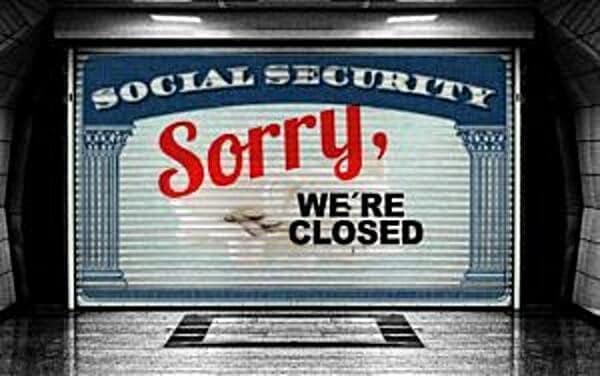Get Your Kids to Save More Money

|
Many of us are over-saving and under-living. The reality is that around half of today’s retirees have more savings than they will ever need - some even doubling their money over the course of their retirements. • Social Security is not going broke. • Inflation is not going to bankrupt you. • Medicare covers more than you realize. • Your savings may go further than you think. • You don’t need a million dollars to retire. Have FUN. You’ve earned it.

|

Let’s talk about Required Minimum Distributions (the money the government forces you to start taking from your retirement accounts at age 72).
Marilyn and Billy Noel sit at their kitchen table, distressed. “This is ridiculous, now that we are getting older, the government is requiring us to start taking money from our IRAs. We don’t need the money! They are forcing us to pay taxes. Thanks a lot, Uncle Sam.”
“What are we supposed to do with this cash?” Marilyn laments, “It’s been making a lot of money in our IRA. Now what? CD’s and savings accounts are paying basically nothing.”
Let’s take a look at how they are approaching this situation incorrectly.
I’m often reminded by concerned clients, “I need to start taking out money at 72 from my retirement accounts or I will get a big tax penalty.”
This is true. The IRS can levy a 50% penalty on any money not withdrawn. There is quite a bit of confusion around this topic, and often a certain level of unease. Let’s get rid of that fear!
The Required Minimum Distribution (RMD) was instituted by the government to stop retirees from deferring their retirement accounts forever (without needing to pay taxes). Uncle Sam doesn’t like that.
RMD’s are required from IRA’s, 401k’s, or any other retirement account on which you have never paid taxes.
Many of you believe that the RMD withdrawal is a large portion of your retirement account. It’s not.
At age 72 you are only required to withdraw 4% of the account value. Age 73– 4.15%
As you see, during your retired years you will probably never need to take out more than 10% per year and even that is way down the road.
If you both pass and your kids get the money, they have ten years to empty out the account (using something called a “beneficiary IRA”).
So don’t let RMD’s be too scary. Just make sure you take out enough. If you are working with a financial advisor it’s something they should be doing for you.
Now let’s get philosophical. According to the Employee Benefit Research Institute, only 18% of Americans take out more than their RMD. This flies completely in the face of the Retirement Revolution lifestyle.
Why are you letting the government tell you how much money to spend?
As you know by now, as long as you invest your money in a diversified portfolio of stocks and bonds (with at least half the money in stocks), you can safely spend 5% of the account each year.
If that is the case, as you take your monthly distributions, you automatically fulfill your RMD. Your RMD doesn’t have to be from the principle, it can be from the growth as well.
Even more importantly, why are retirees waiting until age 72 to start using their money? And when they do, why are they reluctantly being “forced” to do so? Your retirement accounts are for your retirement. Many of you should start using 5% the first year of retirement.
Another note. Some people genuinely do not need the money they receive from their RMD distribution. Like Marilyn complained, “What do we do with this money now?”
The answer is simple but often misunderstood: You invest the money right back into the same portfolio. Notice I didn’t say, “put it back into the same account.” You can open up a non-retirement brokerage account and invest your money exactly the same as it was inside the IRA. You are not restricted to CD’s and money markets. You can invest the money however you want.
So to review:
1. Don’t wait until 72 to start spending your retirement savings.
On a related note, this week I met with a wonderful couple in their mid-eighties, and after speaking to them for a while they said, “I wish we met you twenty years ago! We have more money than ever. What were we waiting for?”
Why did they live like they were broke with money in the bank? Fear. This is why I write these articles each week. I am attempting to battle the overwhelming tide of negativity to empower you to stop hoarding. Within the confines of a well-developed plan, you can enjoy life, be more generous and live confidently that everything will end up okay.
Be Blessed,
Dave
|

|

Sam and Sarah Mayer, ages 83 and 85, go to visit a local financial advisor.
“Sonny boy,” Sarah quips, “We have $500,000 in the bank and it’s making basically nothing. We were wondering if we should invest it in something.”
“Well,” he remarked, “You guys are old as dirt. I guess we can’t put you into anything too risky.”
“Old! We don’t even buy green bananas anymore,” she laughed.
“The standard rule is that you should subtract your age from 100 and that is how much you should put in the stock market,” the advisor informed them.
“So I guess we might want to consider putting 15% in the stock market and the rest into very conservative government bonds and money markets. Maybe even in some fixed annuities.”
Sam nodded. “Makes sense to us. We certainly don’t have time for our money to recover if the stock market crashes. In fact, we are actually able to save money each month now. We are spending less than our Social Security and pensions. So we can probably put more money into this each month and make it grow even more!”
Sarah added, “We’re saving this money for our dear grandson anyway. If we don’t need it, we figure we can bless him with it. He had three great-grandkids for us!”
So Sam and Sarah put their money in this ultra-conservative portfolio and went home…never realizing their poor decision.
This anecdote outlines a concept I’ve battled for years — that as you get older, you need to become more and more conservative with your investments because you “don’t have enough time to make it back.”
Not only do I think this is a ridiculous idea, but the results can be incredibly expensive.
Let’s think about why this thinking is so faulty.
Markets recover very quickly. Even if they put 100% of their money in the stock market (which they shouldn’t), historically, recovery times have never been more than 3 or 4 years. So this whole concept of “We don’t don’t have time for this to recover” is assuming both of them will die in the next three or four years.
Granted, that is possible. This is why 100% in the stock market is not a good idea, either.
Now, let’s look at someone who invests 70% of their money in stocks and 30% in bonds. Remember that when stocks go down, bonds go up. In the past 50 years, the worst return would have been from 2008, where you would have lost 24%. Certainly not fun, but it’s not like you went bankrupt. With this portfolio you would have made all of the money back in a little over one year.
Quick note: The second worst return of this portfolio over the past fifty years was in 2001 where you would have lost 12% and the third worst was 4% in 1976.
Think about that for a second. In fifty years you would have lost a noticeable amount of money two times!
“But Dave, what happens if you need a bunch of money for medical expenses!”
I’ve spoken at length about how huge medical expenses just do not happen as long as you are on Medicare. The only real scare is a nursing home. You would have to start drawing down this money. But strategically all you need to do is use the money from the bond portion of the portfolio first (which is up if the markets are down). By the time your bonds run out, the stock market will have more than recovered.
But here is the main thrust of my argument. There is a 95% chance that they will never use the money. There is probably a 1% chance they use all of it. They’re pretty long in the tooth. They are happy with their lifestyle. They don’t want more stuff. Money doesn’t mean much to them. Their budget is not going to increase.
So if you think about it, what is this money for? In other words, whose money is this really?
It’s their grandson’s. There is a 90% chance he will get most, if not all, of the money. So what does this mean?
They need to invest the money as their grandson would.
It’s as if the advisor sat down with their grandson directly and advised him on a portfolio. A lot of professionals in my industry would look upon this as blasphemy, but with twenty years of experience I have absolutely no doubt this is the appropriate strategy.
By Sam and Sarah investing the money according to their age, they are taking money away from their grandson. Probably a lot of money.
Let’s say this conversation happened ten years ago in 2011 and Sam and Sarah made it all the way to 2021.
If they had invested $500,000 in 15% stocks and 85% bonds, the current account balance would stand at around $900,000. Not bad! Certainly better than getting .1% at the bank.
But what if they used the 70% stock/30% bond mix? In 2021, the grand total reached $1,500,000.
Oops. I’m sure Sam and Sarah’s grandson is grateful and will do great things with his $900,000. But the point is, they could have made him a millionaire.
I strongly believe that anyone, regardless of age, should have at least 60-70% of their money in the stock market.
The only time that it doesn’t make sense is if you are sure you are going to spend the money in the next five years. Most seniors do not have those plans.
Don’t buy into the traditional thinking. It’s a bunch of hooey. You need to invest your money based on what it is for, not your age.
Be Blessed,
Dave |